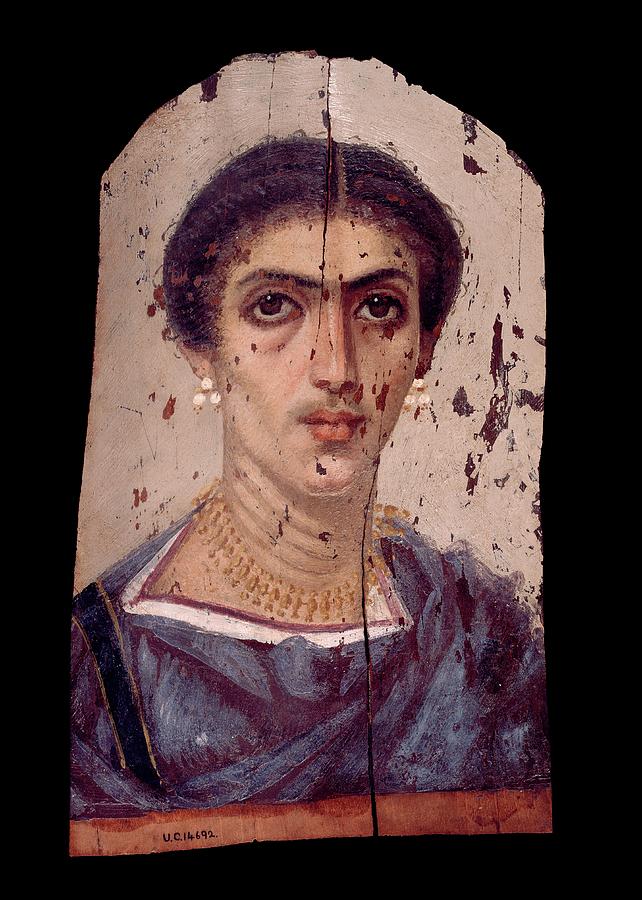



In addition to dominating the social strata, the Greeks also attempted to take charge of Egpyt's religious scene, romanising many of the local gods. The literacy rate (for Greek) rose significantly after Roman settlement, bilingualism in both Greek and Coptic persisting even up to 700 years afterwards The new social structure offered opportunities for those who were wiling to Hellenise to rise to distinction. Yet, while the Greeks discriminated against the local Egyptians, this did not prevent many from gaining access to privilege through social and political institutions and distinguishing themselves economically over time. Tax breaks and access to important civic institutions (colleges, museums, bureaucracies) were reserved for citizens of Greek cities like Alexandria and Ptolemais, with the right to enter the higher echelons of society often dependent on the ability to prove Greek ancestry on both sides. Hellenism became the dominant culture of the region, not because it was the most common, but because Rome favored Hellenes above the native Egyptians (Aigyptoi), clearly distinguishing between the two and granting exemptions from poll and capitation taxes to the dominant Roman elite. Though there were comparatively few immigrants - perhaps 300,000 Hellenes among 7 million Egyptians - the Greek influx to Egypt after Cleopatra's death caused a social revolution, overlaying Egypt's previously function-based society with a new dominant elite. Īfter Octavian's victory over Mark Antony and Cleopatra in 30 BCE, Egypt (Aegyptus) became a part of the Roman Empire, opening its borders to immigration. Many mummy portraits, including L'Européenne, have Romanised hairstyles, jewelry, and clothing that was fashionable at the imperial court of the time. The Roman notion of honoring the dead with a commemorative bust was translated into local Egyptian custom in the mummy portraits. Painting only a person's head and shoulders - the ‘veristic’ or 'bust' style - is a Roman import to Egyptian funerary practices, developed in the first century AD. While Egyptian artists traditionally covered the bodies of divine figures covered in gold leaf, believing the gods were made of the imperishable substance, the liberal use of gold and the extremely high quality of mummy portraits in the Roman period suggests that they were commissioned by the local elite. The gold leaf gilding which makes up L'Européenne's collar and earrings would have been added after the painting process itself was completed. L'Européenne is cut in a stepped panel style, suggested to be from Antinoopolis. The various styles in which the panels were cut can be used to estimate the area where the portrait originated. L'Européenne is made of cedarwood, likely imported from Asia Minor and Syria, though thinner, more flexible woods were typically preferred over hardwood as they would more easily conform to the rounded shape of the coffin. Portraits were most commonly made from imported woods such as lime, oak, fig, and sycamore. Panel styles and their suggested origins. In contrast, those painted in tempera effect have a flat effect resembling watercolors, which some have described as the beginning of a decline in artistic aptitude for the North African region. This method of painting requires great skill with and understanding of materials, and produced very high-quality portraits. L'Européenne is an example of the encaustic technique - a style of wax painting - where artists combine colored pigment with heated beeswax and brush it onto their canvas before it dries. Mummy portraits were typically painted in one of two styles: encaustic and tempera. ĭue to the lack of documentation over L'Européenne's acquisition, there is some uncertainty over the time and place of origin for this piece, but scholars typically place its creation in Antinoopolis from 120-130 AD. The public was initially skeptical of their authenticity upon their unveiling in 1887, but subsequent excavations proved their validity. Many of these portraits were questionably acquired through clandestine archaeological missions, private collections even now holding a significant portion of the 1000+ works which have been discovered. This particular portrait was purchased by the Louvre in 1952, and is currently housed in the Department of Egyptian Antiquities, titled "L'Européenne." This portrait is one of numerous discovered in Egypt, collectively referred to as the Fayum mummy portraits, though not all were discovered in the Fayum.


 0 kommentar(er)
0 kommentar(er)
